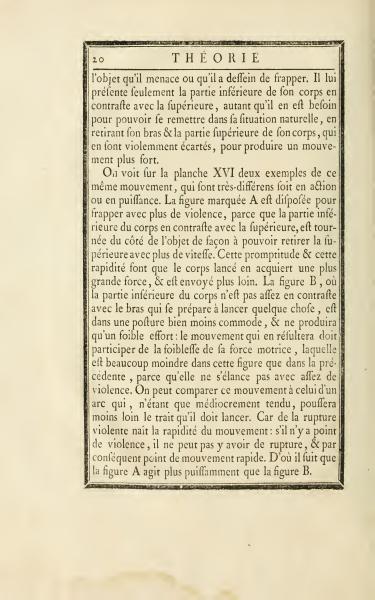Theory
The object that is threatened or intended to be struck presents only the lower part of his body in contrast to the upper part, as much as needed to return to his natural position, by withdrawing his arm and the upper part of his body, which are violently thrown back, to produce a stronger movement.
From plate XVI, we see two examples of the same movement, which are very different, whether in action or in potential. Figure A is positioned to strike with more force, because the lower part of the body, in contrast to the upper part, is turned towards the object so that the upper part can be pulled back with more speed. This swiftness and rapidity give the launched body more force, and it is sent further away. Figure B, where the lower part of the body is not sufficiently contrasted with the arm that prepares to throw something, is in a much less convenient position and will produce only a weak effort: the resulting movement must share the weakness of its driving force, which is much less in this figure than in the previous one, because it does not launch with enough violence. We can compare this movement to that of a bow which, being only moderately tense, will shoot the arrow less far than it should launch. For from violent rupture arises the speed of movement: if there is no violence, there can be no rupture, and consequently no rapid movement. Thus, it follows that Figure A acts more powerfully than Figure B.
The text discusses the contrast between two figures and how their body positions affect the strength and speed of their movements. Figure A is more effectively positioned to use force compared to Figure B. The comparison is made with a bow, where more tension leads to a stronger release.
